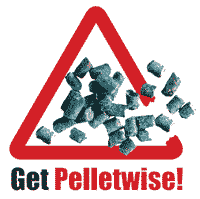Keep slug pellets away from our water

Colin Myram explains why everyone must play their part to preserve metaldehyde
Colin Myram is spokesman for the Metaldehyde Stewardship Group, which is made up of the main manufacturer and six metaldehyde slug pellet formulators. |
The cleanliness of water is quite close to my heart. Every November I, and several chums, spend two or three days standing in the waters of the Tweed trying to entice big fish on to the ends of our lines.
We all take pleasure in the sights of the countryside… to see salmon jumping and dippers dipping is a delight. Then in the summer I cast a line into a local Suffolk trout lake or take a boat on to a reservoir.
Not surprisingly, I have a keen interest in water, But then all of us do – we wash in it, drink it and irrigate our crops with it. So those of us working the fields, either growing crops or advising on crop medicines, will have to keep the issue at the top of our minds. This is particularly so because of forthcoming river basin management plans and existing Drinking Water Directive, nitrate vulnerable zones, catchment sensitive farming and so on.
The Drinking Water Directive is interesting in that all “pesticides” are classified the same irrespective of how hazardous they are, in that the legal level was set at one part per 10bn. That’s 0.5kg of the entire annual UK wheat production – the best part of not a lot. It was set at this level because it was then the limit of analytical methods. However, to put this in perspective, we are allowed to have 100 times more arsenic in our drinking water than the residues of some harmless pesticides, many of which we take or rub on as medicines to cure ourselves.
But the law is the law, ass or not, and we must abide by the regulations, as must the water companies so they can deliver “clean” water. It was, therefore, disturbing to learn during 2007 that one of the water companies, having analysed river water for metaldehyde, the active substance in most slug pellets used across the UK, found it in minute levels. Before this there was no analytical method to search for metaldehyde at such low levels.
Other water companies were alerted and in March 2008 all of the slug pellet formulators were informed and met water companies and other interested parties in April to discuss the issue. On the back of this, metaldehyde slug pellet manufacturers set up a stewardship group to investigate the problem and bring it to the attention of the industry. At the Cereals event in June best practice advice leaflets and applicator stickers were distributed stating that slug pellets are pesticides and should be treated accordingly.
This advice emphasised the need not to spread pellets near to surface water or ditches, only fill in the field away from the headland, clear up any spillages and clean down the applicator, again in the field, not the yard, to avoid pellets being washed down drains.
In addition, the industry stressed that pellets should not be used if heavy rain was forecast. So what happened last autumn? Heavy rain fell and with a vengeance, coinciding with some of the most difficult crop establishment conditions we have experienced for some time, with the result that metaldehyde has again been detected in river water.
The seriousness of this cannot be overstated. It is clear for all in the industry that further action is urgently needed, or continued incidences of metaldehyde residues in surface water could lead to restrictions in its use, and potentially even a ban of what is a highly important crop production tool.
Everyone, including manufacturers, distribution and the farming community, needs to change his perception of slug pellets and embrace the fact that they are pesticides.
Already we have the buy-in of the Metaldehyde Stewardship Group, the Agricultural Industries Confederation and the NFU. These organisations are working closely with the water companies, Water UK, Environment Agency, Drinking Water Inspectorate, Natural England, Pesticide Safety Directorate, Association of Independent Crop Consultants, National Register of Sprayer Operators, Voluntary Initiative and others.
The industry is proposing to introduce on to labels a “no spread zone” of 5m from surface waters and ditches as well as restrictions on rates. We also all need to be much more mindful when applying pellets to saturated ground and when heavy rain is forecast.
It is imperative that all of us take heed of the warnings and act as one to minimise the risks.
When next on the river, lake or reservoir, I trust we can all fish with a clear conscience in clean water. I for one, wearing my agronomist’s hat, cannot imagine life without metaldehyde for slug control. It is essential this autumn’s lesson is learned and practices are changed.
Let’s hold on to metaldehyde
Crops, Farmers Weekly and FWi believe it is vital that metaldehyde remains at the forefront of the arable farmer’s crop protection armoury. To that end, we are delighted to partner the Metaldehyde Stewardship Group to help promote the Get Pelletwise! campaign. Look out for a series of articles, academies and posters to help keep you abreast of advice and developments right through 2009. |

